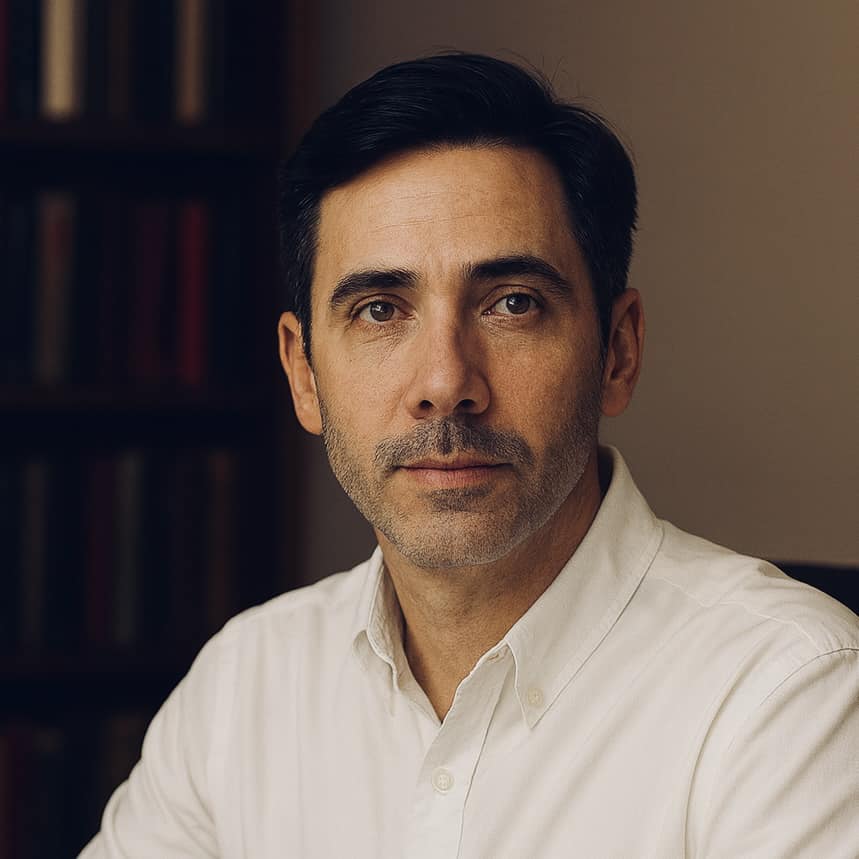In this article, let’s join Cloverlogy to explore a critical topic in the journey of personal growth: the six inner barriers that each of us faces. These barriers are like invisible chains, wrapping around us and preventing us from reaching our true potential. But don’t worry, once we recognize and overcome these obstacles, we can experience a profound transformation, much like a butterfly breaking free from its cocoon to soar freely. Let’s dive into each barrier and discover how to break them down to become the best version of ourselves.
Each of us carries limitless potential to grow and become the person we dream of being. But often, we’re held back not by external limitations, but by the constraints within our own minds. These inner barriers, like the six chains described, not only stop us from moving forward but also make us feel trapped, unable to break through. The good news? We can absolutely overcome them, as long as we’re willing to face them and take action. Imagine yourself as a caterpillar in a cocoon, each time you break through a barrier, you’re one step closer to becoming a vibrant butterfly.
Related reading, What is freedom?
1. The First Barrier: Self-Diminishment
Have you ever told yourself you’re not good enough to do something? Do you often say, “I can’t” or “I’m not capable”? If so, you’re encountering the first barrier: self-diminishment. This is when we view ourselves as ordinary, incapable of achieving great things. These thoughts can stem from various sources, criticism from others, past failures, or even our own self-doubt. When we believe we’re not good enough, we unknowingly reject opportunities for growth. We may avoid challenges, shy away from pursuing dreams, and ultimately stay stuck in our comfort zones.
Consider someone who dreams of becoming a renowned writer but thinks, “I don’t have the talent others have; I’m just average.” Because of this mindset, they never start writing their book, missing the chance to hone their skills and share their story with the world. Or picture an employee who wants a promotion but tells themselves, “I’m not smart enough to be a manager.” As a result, they never pitch ideas or take on big projects, remaining stuck in their current role. If we don’t overcome this barrier, we risk living a life full of regrets, never discovering our true potential.
To overcome self-diminishment, we need to shift how we see ourselves. Instead of focusing on weaknesses, highlight your strengths. Remind yourself of the small successes you’ve achieved, no matter how minor they seem. Challenge negative thoughts by asking, “Why do I think this way?” or “Is there evidence I can’t do this?” You can also build confidence through action. Start with small, achievable goals and gradually increase their difficulty. Celebrate each milestone to motivate yourself. Another approach is to seek support from those around you. Share your goals with friends or family and ask for their encouragement. Sometimes, a kind word or bit of encouragement from others can significantly boost your confidence. Finally, remember that nobody is perfect, and everyone has flaws. The key is to accept yourself and keep striving to improve.

2. The Second Barrier: Fear of Failure
Have you ever felt anxious about a new opportunity because you’re afraid you might not succeed? Fear of failure is a common inner barrier that causes us to avoid risks and opportunities, keeping us in our comfort zones. This fear can come from past failures or even the mere possibility of failing. It leads to procrastination, avoidance, and sometimes abandoning big dreams.
Think of someone who wants to apply for a job at a prestigious company but fears rejection, so they never submit their application. They miss out on a potentially life-changing career opportunity. Or consider a talented artist who doesn’t display their work because they’re afraid of criticism. They keep their paintings hidden, never sharing their talent with the world. If we don’t overcome the fear of failure, we may remain trapped in a cycle of safety, never daring to try new things and thus never fully realizing our potential.
To conquer fear of failure, we need to reframe failure as a learning opportunity. Failure isn’t the end, it’s part of the journey. Think of Thomas Edison, who failed thousands of times before inventing the light bulb. Each failure was a lesson that brought him closer to success. You can also set small, manageable goals to reduce pressure and build confidence. For example, if you want to write a book, start by writing one page a day. Learn from successful people who overcame failure to achieve their goals. Finally, practicing mindfulness, such as meditation or deep breathing, can help reduce anxiety related to fear of failure, allowing you to focus on the present instead of worrying about the future.

3. The Third Barrier: Fear of Criticism
Do you ever hesitate to try something new because you’re worried about what others might think? Fear of criticism is the anxiety of being judged negatively, mocked, or criticized. This fear can stem from a desire for acceptance or past experiences of being criticized. It causes us to live inauthentically, stifling our creativity and growth.
Imagine someone who wants to pursue a music career but fears their family will judge them for choosing an unstable path, so they settle for an office job they don’t love. Or picture an employee with an idea to improve a work process but hesitates to share it, fearing ridicule from colleagues or their boss. If we don’t overcome the fear of criticism, we may live a life that’s not true to ourselves, missing opportunities to grow and shine.
To overcome fear of criticism, build self-esteem by recognizing that your worth doesn’t depend on others’ opinions. Focus on what matters to you and your own values. Learn to distinguish between constructive and destructive criticism, constructive feedback can help you improve, while destructive criticism is often not worth your attention. Seek support from encouraging people who uplift you. A positive support network can boost your confidence when facing criticism. Finally, practice assertiveness by confidently expressing your opinions and feelings, even if there’s a risk of criticism.

4. The Fourth Barrier: Perceived Lack of Resources
Have you ever felt you couldn’t pursue a goal because you lacked money, time, or opportunities? Perceived lack of resources is the belief that we don’t have enough to achieve what we want. This common barrier leads many to give up before even starting, convinced their circumstances prevent progress.
Think of someone who wants to start a business but believes they need millions of dollars to begin, so they never try starting small or seeking investors. Or consider someone who wants to learn a new language but thinks they don’t have time, so they never integrate learning into their daily routine. If we don’t overcome this barrier, we may remain trapped in a cycle of excuses, blaming external circumstances instead of finding ways to move forward.
To overcome a perceived lack of resources, adopt creative thinking. Look for alternative solutions to achieve your goals. For example, if you can’t afford a course, explore free online resources or self-study materials. Prioritize your goals by identifying what’s truly important and being willing to sacrifice less critical activities. For instance, cut back on TV time to learn a new skill. Leverage available resources like libraries, online communities, or local programs. Finally, connect with people who can help, such as mentors, friends, or family, who may offer guidance or even financial support.

5. The Fifth Barrier: Lack of Knowledge
Have you ever felt helpless because you didn’t know where to start to achieve a goal? Lack of knowledge occurs when we don’t have the information or skills needed to make informed decisions or take action. This can leave us feeling confused or demotivated, leading to inaction.
Consider someone who wants to improve their health but doesn’t know how to create a balanced diet, so they continue unhealthy habits. Or picture an employee who wants a promotion but doesn’t know which skills are needed or how to acquire them, leaving them stuck in their role. If we don’t address this lack of knowledge, we may remain trapped in self-doubt and unable to progress.
To overcome lack of knowledge, identify exactly what you need to learn to achieve your goal. For example, if you want to learn coding, research which programming language best suits your objectives. Seek out free or low-cost resources like books, online courses, or tutorials – platforms like Cloverlogy. Learn from others, such as mentors or those experienced in your desired field, who can provide guidance and share practical insights. Finally, commit to lifelong learning, dedicating time each day to learn something new, even if it’s a small lesson.

6. The Sixth Barrier: Lack of Vision
Have you ever felt directionless, unsure of what you’re striving for? Lack of vision is when we don’t have a clear picture of what we want to achieve or the life we desire in the future. It’s like getting into a taxi without knowing your destination, leaving you aimless and unmotivated.
Think of a college student who doesn’t know what they want to do after graduation, leading to a lack of motivation and wasted opportunities during their studies. Or consider an office worker without long-term goals, going through the motions daily without advancing their career. Without a vision for the future, we risk living a purposeless life, falling into ineffective habits or feeling empty.
To overcome lack of vision, take time to reflect on your ideal life in five or ten years. Write down what you want to achieve in your career, family, health, and other areas. Break your vision into smaller, measurable goals. For example, if you aspire to be a leader, set a goal to learn leadership skills within six months. Create an action plan with specific steps to reach your goals. Draw inspiration from books or stories of people who achieved big goals to help clarify your own vision.

True Transformation Comes from Within
To illustrate the importance of overcoming inner barriers, let’s revisit the butterfly metaphor. A boy watches a chrysalis as a butterfly prepares to emerge. He patiently observes from morning to noon as the butterfly begins to break free. But when his mother calls him for lunch, he grows impatient and tears open the cocoon to help. The butterfly emerges but is too weak to fly and eventually dies. The lesson? True transformation must come from within. If we rely on external forces to break our cocoon, we may lose the chance to develop our inner strength. Like the butterfly, we must face and overcome our inner barriers to grow.
The six inner barriers – self-diminishment, fear of failure, fear of criticism, perceived lack of resources, lack of knowledge, and lack of vision – are chains that hold back our growth. But they are not invincible. By recognizing these barriers, challenging them, and taking action to overcome them, we can break free from our cocoon and undergo a profound transformation. This journey isn’t easy, but it’s worth it. Every step forward, no matter how small, brings you closer to the best version of yourself.
Start today with courage and commitment to build a life filled with meaning, success, happiness, and freedom. Thank you for joining Cloverlogy on this journey!













